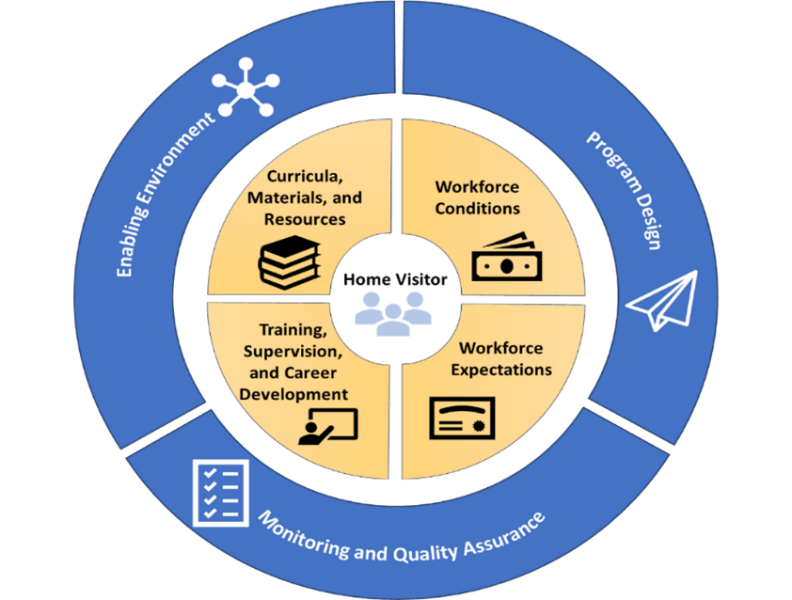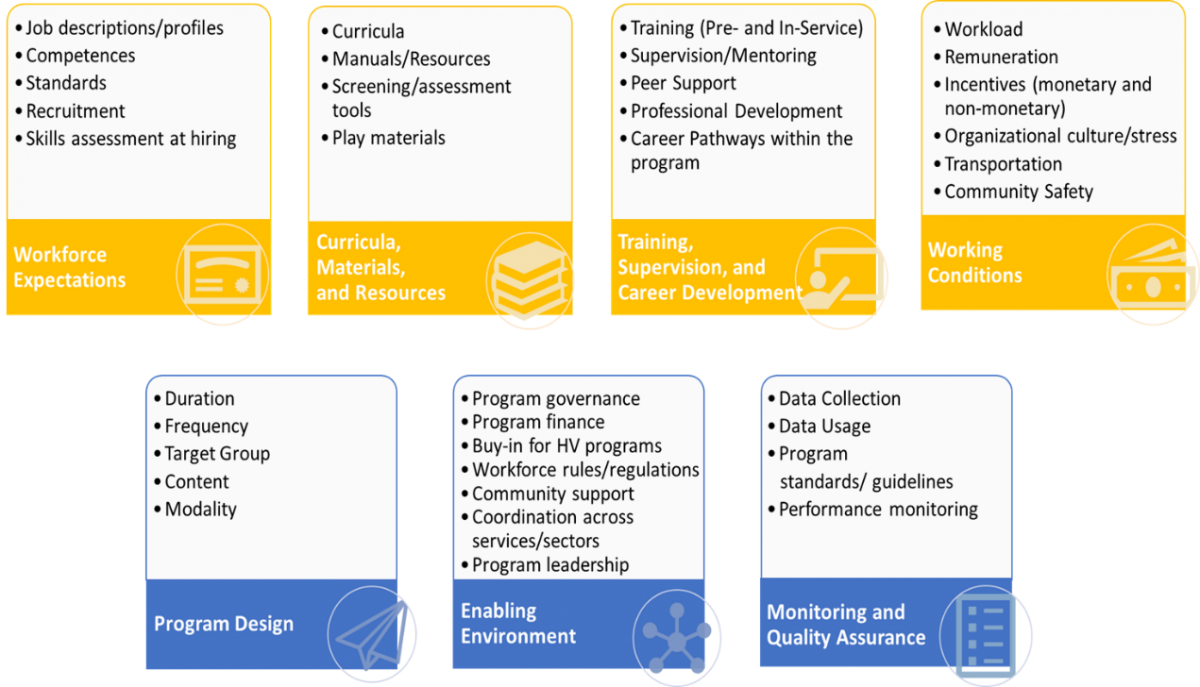Date: October 18, 2019
Time: 00:00
The date of this webinar has passed. You may access the recording below.
|
Mounting evidence on the positive link between early childhood development (ECD) services and the physical, social, and cognitive development of young children has encouraged governments, development partners, and families to invest more in the early years. Despite a growing body of knowledge on the importance of the early childhood workforce as a key component of quality services, there remains a lack of basic data on factors such as the qualifications of personnel, their pay experiences and training levels, and the availability of support staff. Under the Early Childhood Workforce Initiative, Results for Development (R4D) and the International Step by Step Association (ISSA) carried out key informant interviews (KIIs) across 15 countries in diverse regions to learn about country priorities around the early childhood workforce, promising approaches to supporting the workforce, current data gaps, and interest in piloting a needs assessment tool. The interviews reinforced the fact that government officials and program managers lack access to basic data on the workforce and desire additional information that captures experiences across levels of government. Such lack of information prevents policymakers and managers from identifying and diagnosing gaps in the workforce that could inform future policies and programming. In response to these data needs, R4D and ISSA developed a needs assessment tool to support policymakers responsible for policy planning and personnel management of ECD programs around the early childhood workforce. The tool focuses particularly on personnel supporting home visiting programs delivered across sectors for pregnant mothers and caregivers with children under 3. The webinar will share more on this Tool, addressing the following topics and questions:
Moderator and Panelists: Moderator:
Panelists:
|
|
|
|
More on the Tool |
|
The tool is organized around seven areas:
|
|
|
|
The Early Childhood Workforce Initiative Home Visiting Workforce Need Assessment Tool was inspired by the UNICEF Pre-Primary Diagnostic and Planning Tool.
|
|
|
|
|

 The tool aims to assist policymakers at the national or sub-national levels in:
The tool aims to assist policymakers at the national or sub-national levels in: